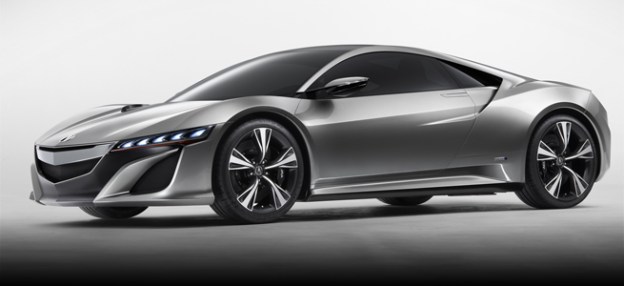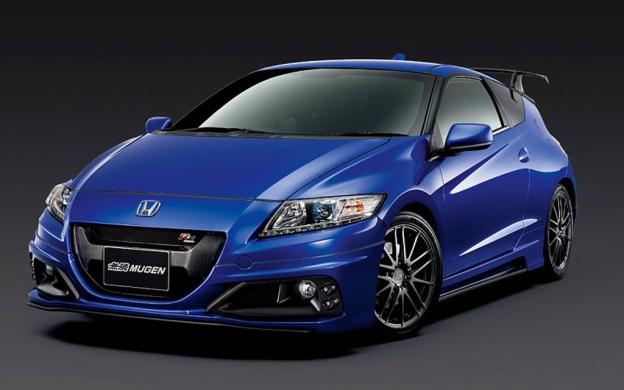
Electric vehicles and hyper-miling plug-ins might be media darlings, but conventional hybrids, like Toyota’s ever-popular Prius and Honda’s Insight, are becoming firmly entrenched as the everyday standard of green motoring. The original Prius and Insight may have been impractical toys, but current hybrids have reached a level of refinement and practicality that rivals conventional gasoline and diesel cars.
This improvement, and ever-stricter Corporate Average Fuel Economy (CAFE) standards, are leading some companies to plan large-scale hybridization. Toyota, for example, hopes to have 21 hybrid models on sale worldwide by 2015, and to eventually have a hybrid version of every car it makes.
That’s not too much of a problem if you want a midsize sedan or an SUV, but what if you’re looking for something less boring? Hybrids seem to work well as regular cars, but can they replace the performance cars that gearheads hold dear?
 Power
Power
One thing hybrids can do is produce prodigious amounts of horsepower. Some carmakers actually view a hybrid’s electric motor as an energy-boosting addition to the gasoline engine, which has led to the creation of some hybrids that are powerful and frugal, but not especially fast.
Lexus more or less invented this concept with its GS and LS hybrid luxury sedans. Short of the LFA supercar, the LS 600h L is the most expensive car Lexus makes, and it’s the most powerful LS variant.
Like non-hybrid all-wheel drive LS models, the LS 600h L has a 4.6-liter V8, with 360 horsepower and 347 pound-feet of torque. However, it also has a 221 hp electric motor.
It’s the same case with the GS 450h. It has 338 hp, compared to the non-hybrid models’ 306 hp. At $59,450, it’s also about $4,000 more than a loaded GS 350 F Sport with all-wheel drive.
Why make a hybrid the most powerful car in the lineup? It actually has less to do with performance than marketing. While the 450h is the fastest GS to 60 mph (by 0.1 second), the LS 600h L is beaten by the lighter, rear-wheel drive LS 460.
The truth about these cars is in their names. Lexus calls its hybrid LS a “600” because, the brand claims, it offers the power of a 6.0-liter V12 with the fuel economy of a 4.6-liter V8. Similarly, the GS 450h is supposed to replicate that V8’s power, but with a V6’s fuel economy.
So the Lexus hybrids deliver on fuel economy, but without any significant increase in performance, it’s hard to see the point of all that extra power.
A sure sign that the performance hybrid has arrived (or of the apocalypse) is the existence of a hybrid Porsche. In fact, there are two of them: The Panamera S Hybrid and Cayenne S Hybrid. However, with 380 hp, both are pretty close to the bottom of their respective model lines. Porsche is working on a hybrid with more oomph, but more on that later.
If quantity is a bust, what about quality? There are plenty of powerful gasoline cars, but the way they deliver that power can be just as important. It’s (part of) what distinguishes a V8 Ford Shelby GT500 Mustang from a V8 Ferrari 458 Italia.
Enter a very unlikely savior. The Honda CR-Z was supposed to be the second coming of the light and nimble CRX hatchback, but it just isn’t. Japanese tuner Mugen is pointing it in the right direction, though.
By giving the CR-Z’s revvy four-cylinder engine more power, Mugen has made the most of both electricity and gasoline. The electric motor can power the car off the line, at speeds when the gasoline engine doesn’t make much power. The four-banger then takes over at higher speeds.
 Handling
Handling
Hi-def power delivery aside, the CR-Z still shows that carmakers aren’t able to make a hybrid that handles well. Despite its name, the hybrid Honda hasn’t been able to match the fun factor of the Mini Cooper, Fiat 500, or Volkswagen GTI.
Part of the problem is weight. No new car will ever match the 1980s CRX’s 1,802-pound curb weight, but hybrids are always at a disadvantage when compared to regular cars. In addition to engines and transmissions, hybrids have to carry heavy battery packs, electric motors, and their associated control equipment.
Weight negatively affects every aspect of performance, so sporty hybrids may have to wait for advances in lightweight materials before they can really compete for car enthusiasts’ hearts.
Tires are another problem. Subaru and Scion may have fitted Prius-spec Michelin Primacy HPs to the BRZ and FR-S, respectively, but that was to increase low-speed fun. These low-rolling resistance tires have less grip, so it’s easier to slide these affordable sports cars at non-suicidal speeds.
However, to keep this from happening at high speeds, cars need tires with more grip, That means they require more effort to turn, which hurts fuel economy.
 Tech
Tech
The hybrid isn’t looking like a very good performance car. So why is Ferrari poise to unveil one, the F150, at the Geneva Motor Show in a few weeks? And why are Porsche and Acura building hybrid supercars of their own?
The short answer is: big money buys more tech. The Ferrari F150, successor to the 2003 Enzo, will have the F12berlinetta’s 6.3-liter V12 and a Formula 1-style Kinetic Energy Recovery System (KERS).
KERS uses a spinning flywheel or a small battery to store energy recovered during braking. This setup is much lighter than a regular hybrid’s battery pack, although it means the F150’s electric-only range will probably be minute.
The F150 will have other unique features, such as a carbon fiber monocoque chassis draped in carbon fiber body panels and up to 950 total horsepower, that should make it one helluva supercar, even if it isn’t a very good green car.
Porsche’s 918 Spyder won’t have KERS, but it will have 780 hp, courtesy of a 4.6-liter V8 and two electric motors. Like the Ferrari, the 918 uses an exotic material (in this case, carbon fiber-reinforced plastic) for its chassis. While technically not a conventional hybrid (drivers can’t plug it in to recharge the battery pack), it can drive on electricity at up to 94 mph, and has already lapped the Nürburgring in 7:14.
A third way to build a performance hybrid is being offered up by Acura. Honda’s luxury division is so confident in its “Sport Hybrid Super Handling All-Wheel Drive” system that it bestowed the legendary NSX name on its new hybrid supercar.
The NSX will primarily be rear-wheel drive, with a mid-mounted V6 providing most of the power. However, electric motors will kick in to power the front wheels when needed. The system will also be used in the RLX sedan, where it will produce more than 370 hp.
Can you really have it all?
Packaging two powertrains in one car, and asking it do everything expected of a normal car while delivering outstanding fuel economy, is a tall order. Making those systems work together harmoniously is also tough, but can potentially be overcome with well written software.
So far, “performance” and “hybrid” seem to be mutually exclusive terms. But with three hybrid supercars about to powerslide onto the scene, that could change.





